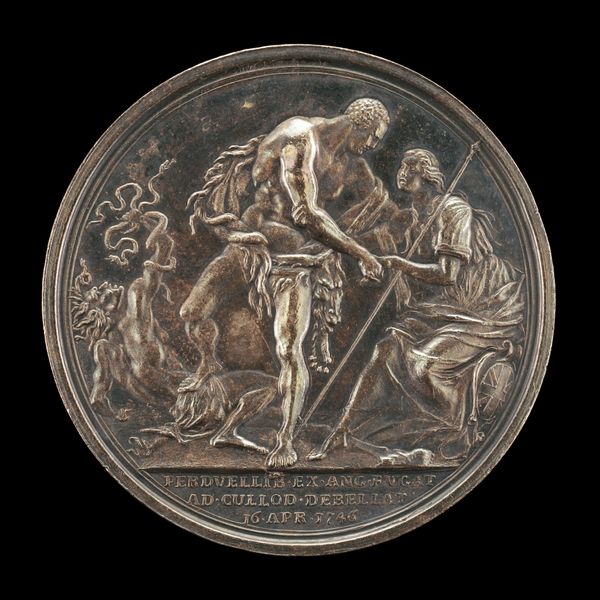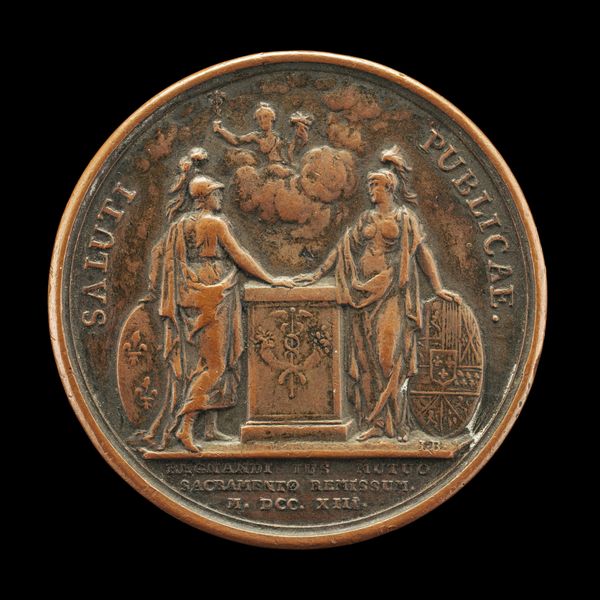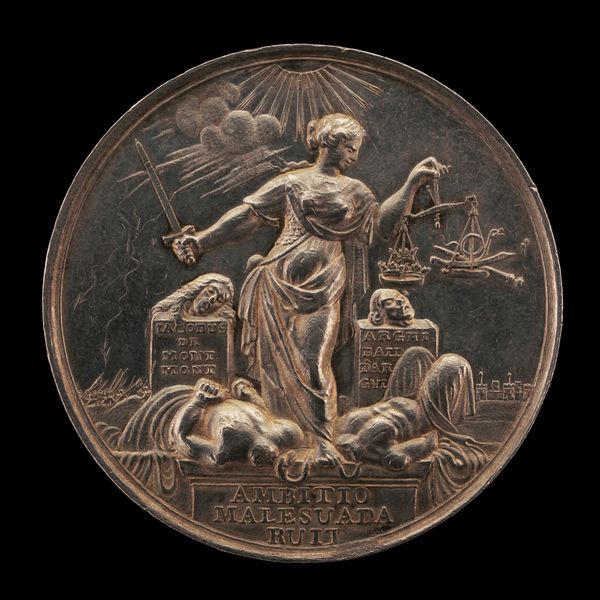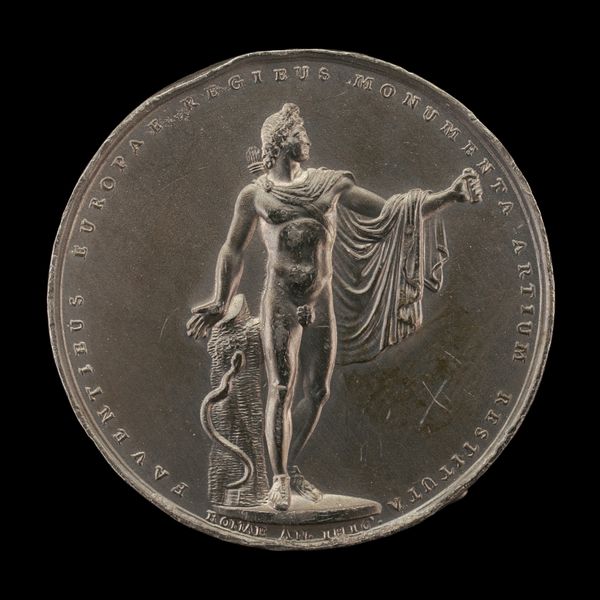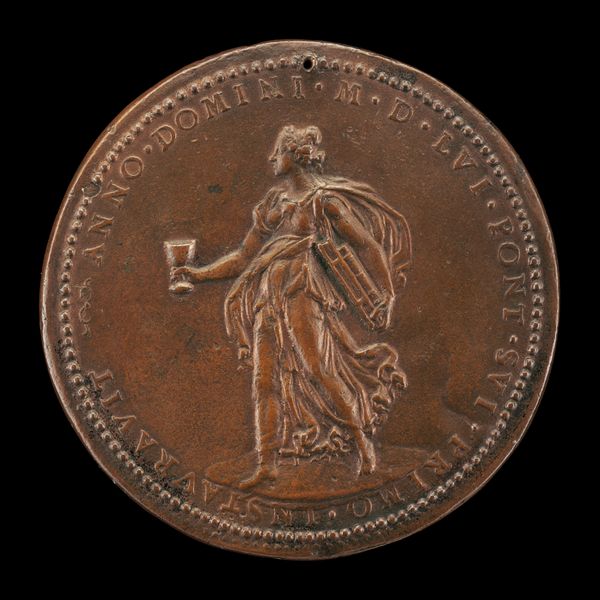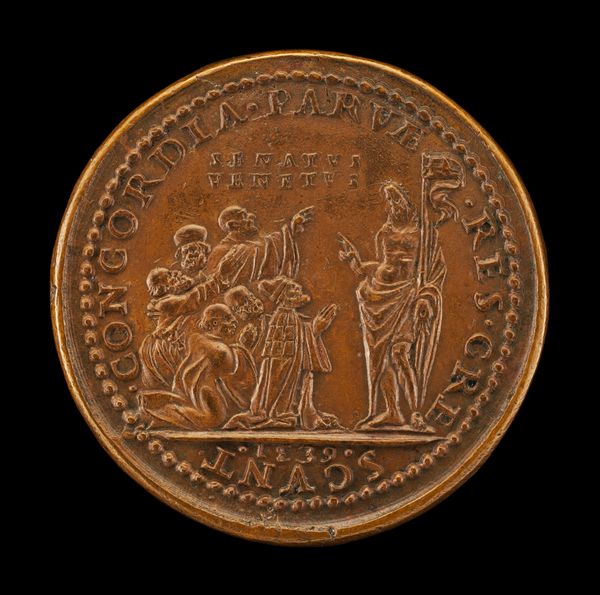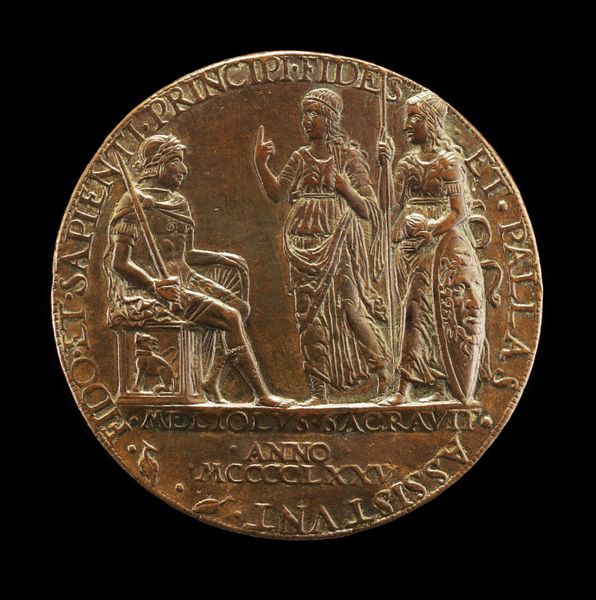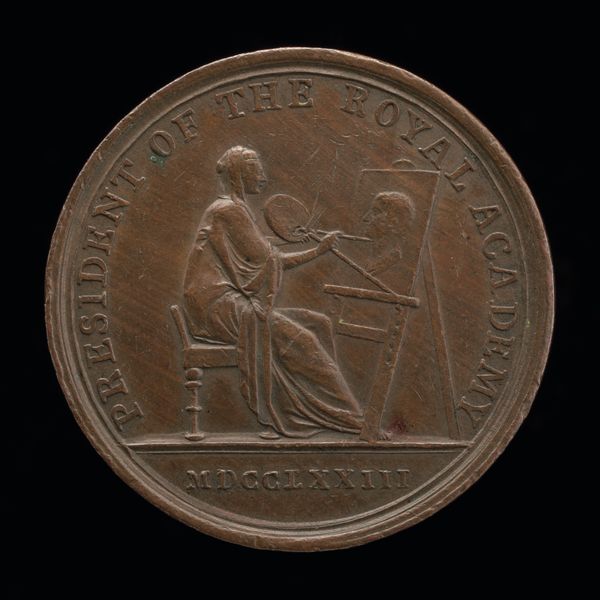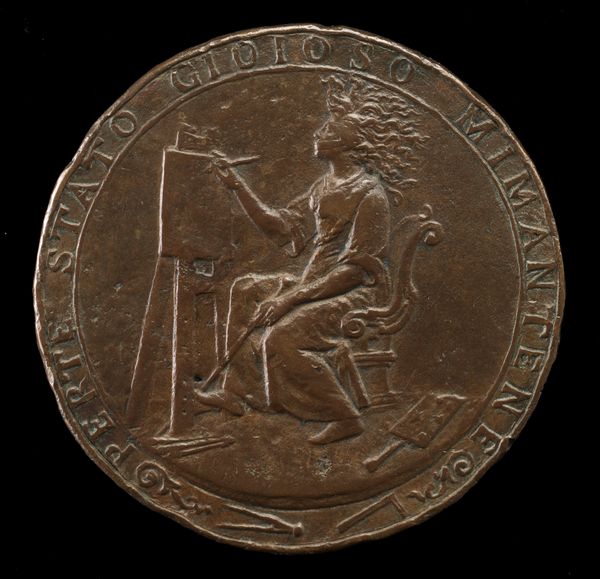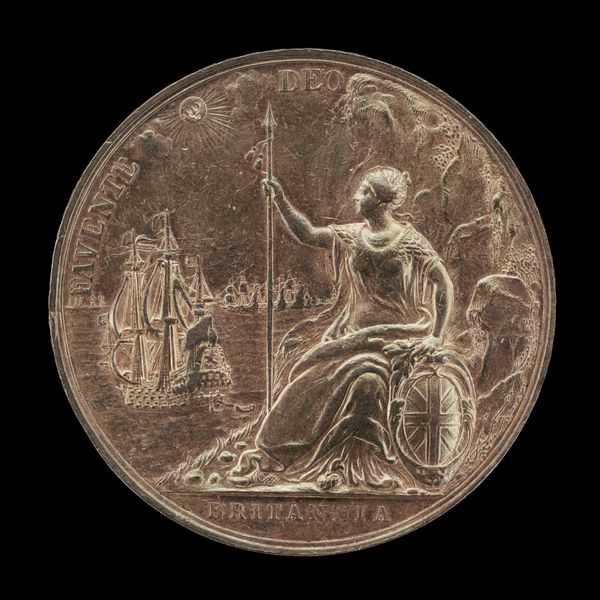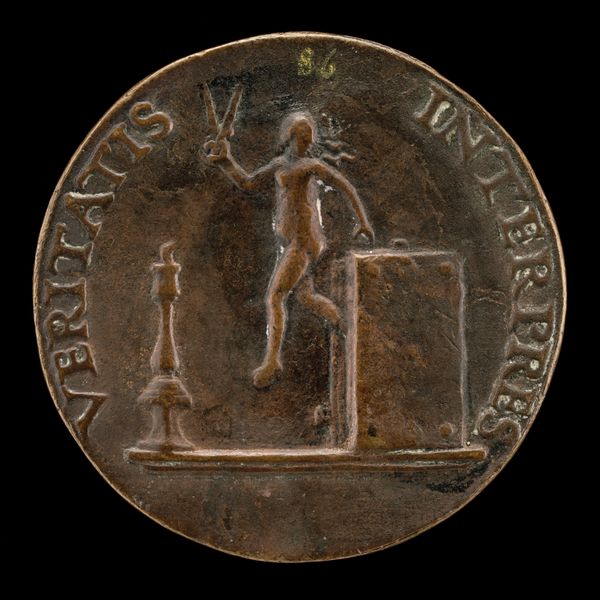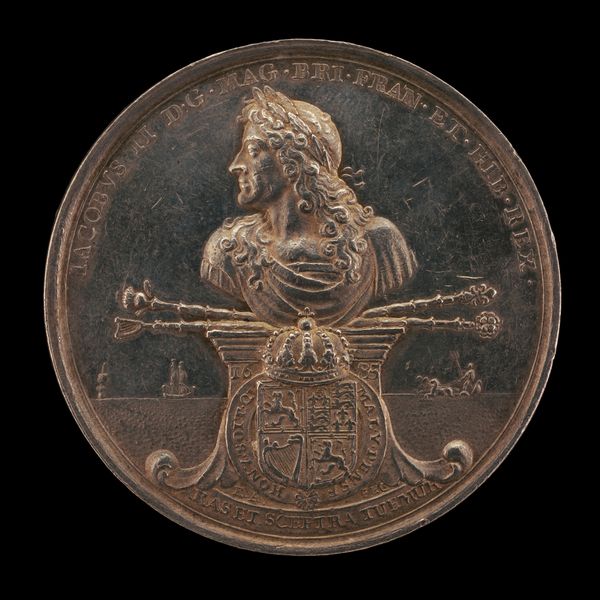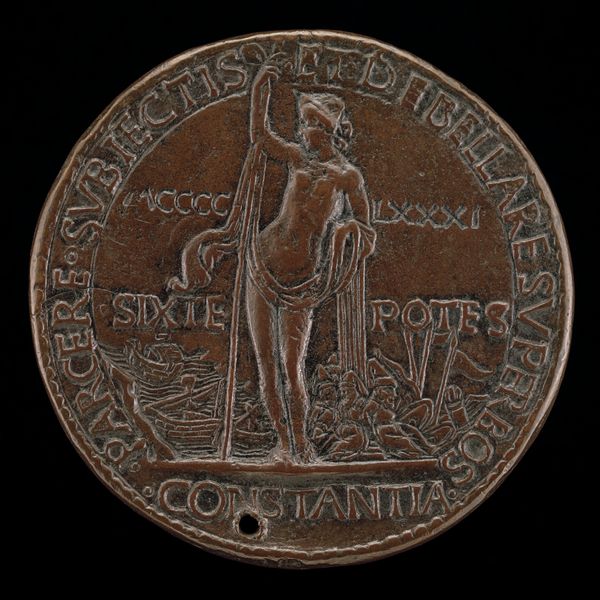![Allegory of Religion [reverse] by Filippo Cropanese](/_next/image?url=https%3A%2F%2Fd2w8kbdekdi1gv.cloudfront.net%2FeyJidWNrZXQiOiAiYXJ0ZXJhLWltYWdlcy1idWNrZXQiLCAia2V5IjogImFydHdvcmtzL2IyOTkyMzcwLTU4NjctNDhiYy05ZDA1LWU2YzJiMmM5YzkxZS9iMjk5MjM3MC01ODY3LTQ4YmMtOWQwNS1lNmMyYjJjOWM5MWVfZnVsbC5qcGciLCAiZWRpdHMiOiB7InJlc2l6ZSI6IHsid2lkdGgiOiAxOTIwLCAiaGVpZ2h0IjogMTkyMCwgImZpdCI6ICJpbnNpZGUifX19&w=3840&q=75)
metal, relief, sculpture
#
neoclacissism
#
allegory
#
metal
#
sculpture
#
relief
#
figuration
#
sculpting
#
geometric
#
sculpture
#
history-painting
#
miniature
Dimensions: overall (diameter): 5.3 cm (2 1/16 in.) gross weight: 67.56 gr (0.149 lb.) axis: 12:00
Copyright: National Gallery of Art: CC0 1.0
This is the reverse side of Filippo Cropanese's bronze "Allegory of Religion," made in 1778. This small medallion encapsulates the complex relationship between religion, authority, and societal values in late 18th-century Europe. The female figure embodies religious virtue, signified by the cross, book, and lion; she stands in stark contrast to the discarded crown. Consider the cultural backdrop against which Cropanese created this piece. The late 1700s was a period defined by the Enlightenment and the questioning of traditional power structures. The imagery invites us to reflect on the perceived virtues of religious devotion versus the perceived corruption of monarchy. Cropanese seems to suggest a shift from earthly power to spiritual enlightenment. The question lingers: does this piece serve as a critique of earthly power, or as a reinforcement of religious authority? What does it mean to place religion in a position above governance?
Comments
No comments
Be the first to comment and join the conversation on the ultimate creative platform.
